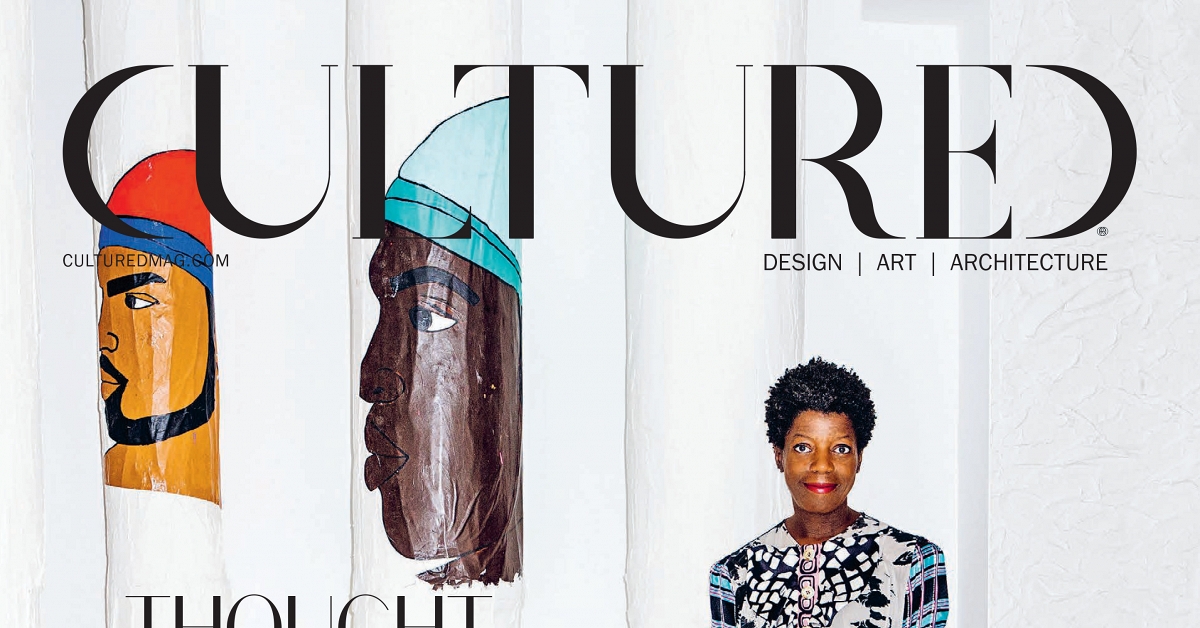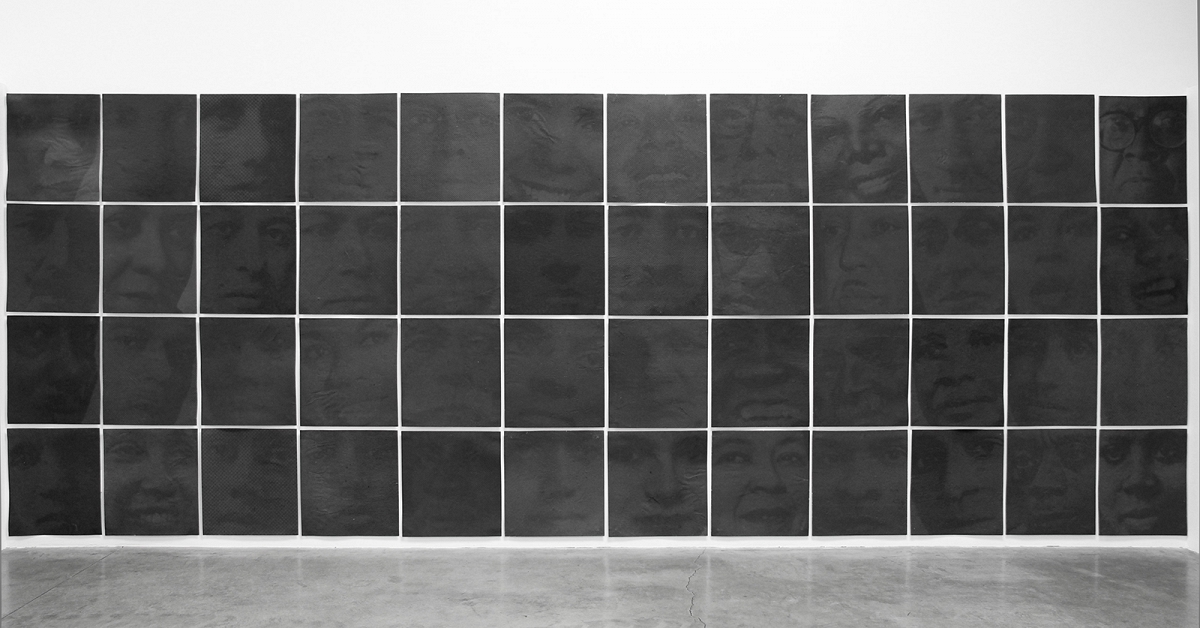An Artist Who Paints in Cryptic Pastel Symbols: Caroline Kent’s canvases explore the power and limits of language — and challenge the modernist canon of abstraction.
New York Times / Nov 16, 2020 / by Jenn Pelly / Go to Original
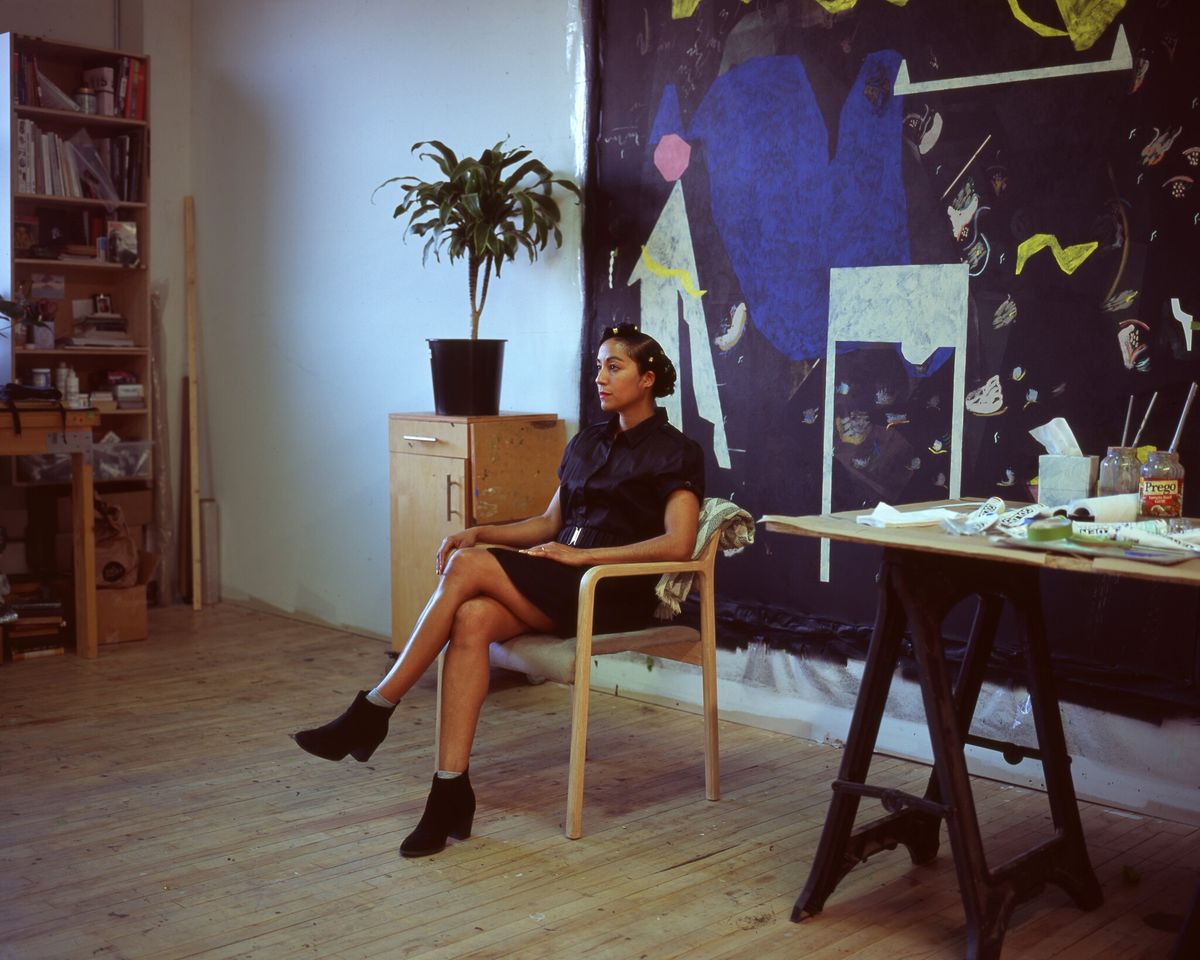
The abstract painter Caroline Kent at her studio on Chicago’s West Side. She calls herself “a Midwesterner through and through." –Samantha Cabrera, Friend
Even as a child, Caroline Kent was immersed in the language of abstraction. The Chicago-based artist — whose large-scale black canvases evoke cosmic unknowns — grew up alongside her identical twin sister, Christine Leventhal, with whom she shared special methods of communication. Their conversations can still be so elliptical and condensed that they perplex others.
Kent’s recent installation work, “Victoria/Veronica: The Figment Between Us” (2020), features a fictional set of telepathic twins, and the curious depths of cryptic speech are also reflected, more broadly, in the vibrant painting language for which Kent, 45, has become best known. She calls these works, which look a little like nocturnes by way of Hilma af Klint, “midnight canvases” and considers their black backgrounds to be metaphors for “undefinable, unlocatable spaces.” Layered on top, as if free-floating sans gravity, are pastel shapes and textures that conjure, she said, “things that might have at one time been covered in darkness, but have now been illuminated.” Eight of these mystical, abstract paintings make up Kent’s debut solo show, called “A Sudden Appearance of the Sun,” at Los Angeles’s Kohn Gallery.
Reality was very much pitched toward uncertainty, and in need of light, when I called Kent on the first Wednesday of November. FaceTiming from her bright studio on Chicago’s West Side, where she moved in 2017 after 15 years in Minneapolis, Kent spoke with genial precision — a clarity that underscored her roles as both a teacher (at Northwestern) and a mother (of three). The artist is also, she said, “a Midwesterner through and through.” Growing up in rural Sterling, Illinois — the daughter of a Mexican homemaker mother and an African-American accountant father — she absorbed the Midwestern work ethic early on. “I grew up detasseling corn,” she said, laughing at her old summer job. At the same time, the pace of life there left her room to dream. “I had a lot of curiosity about what laid beyond the borders of a small town,” she said.
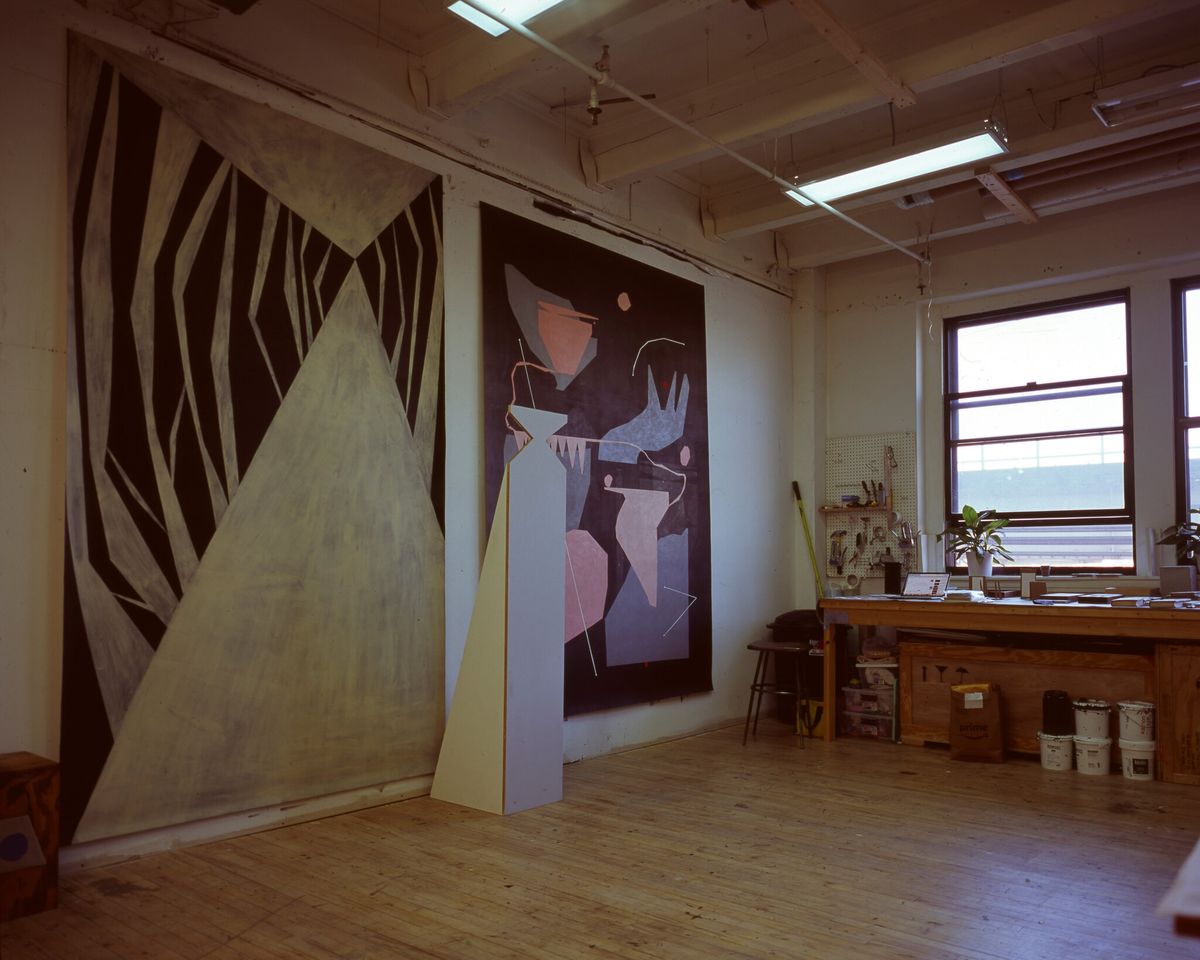
The artist’s pastel palette is inspired by her time spent living in Eastern Europe.
Arriving at Illinois State University in 1993 on an athletic scholarship — she ran track and field — Kent had no plans to become an artist, but she would often linger in the campus gallery. Her early influences included the austere Russian Constructivists, hard-edged Ellsworth Kelly shapes and foreign films. Kent became enchanted by how a visual language could be universal. “I’d always felt on the outside of language,” she said. “Moving through the world, I found it was often a barrier one had to surpass in order to connect. With abstract painting, everybody had the same starting point.”
After college, she joined the Peace Corps, and lived for two years in Transylvania in Romania. “I was coming from a place where homes are kind of monotone,” she recalled. “In Transylvania, there were dusty pastel colors all over the place. It did something optically that I wasn’t familiar with.” She’s lately been exploring another part of the world, Mexico, and with it, her own heritage. And by actively participating in the discourse of abstraction, she said, she is interrogating a canon that has historically marginalized artists of color. “It’s almost void of Black and brown voices,” she said. “I want to confront that.” She sees some of her work as a challenge to “the preciousness of the canvas,” too, especially her tactile paintings on paper, for which she feeds painted pages into a typewriter, turning them into collages of text, color and stated emotion. Like many of Kent’s works, they contain an uncanny aura, while seeming to consider, quite powerfully, the stakes of legibility. “Time will tell if my participation will matter,” she said, “but I make as if it does.” Below, Kent’s answers to T’s artist’s questionnaire.
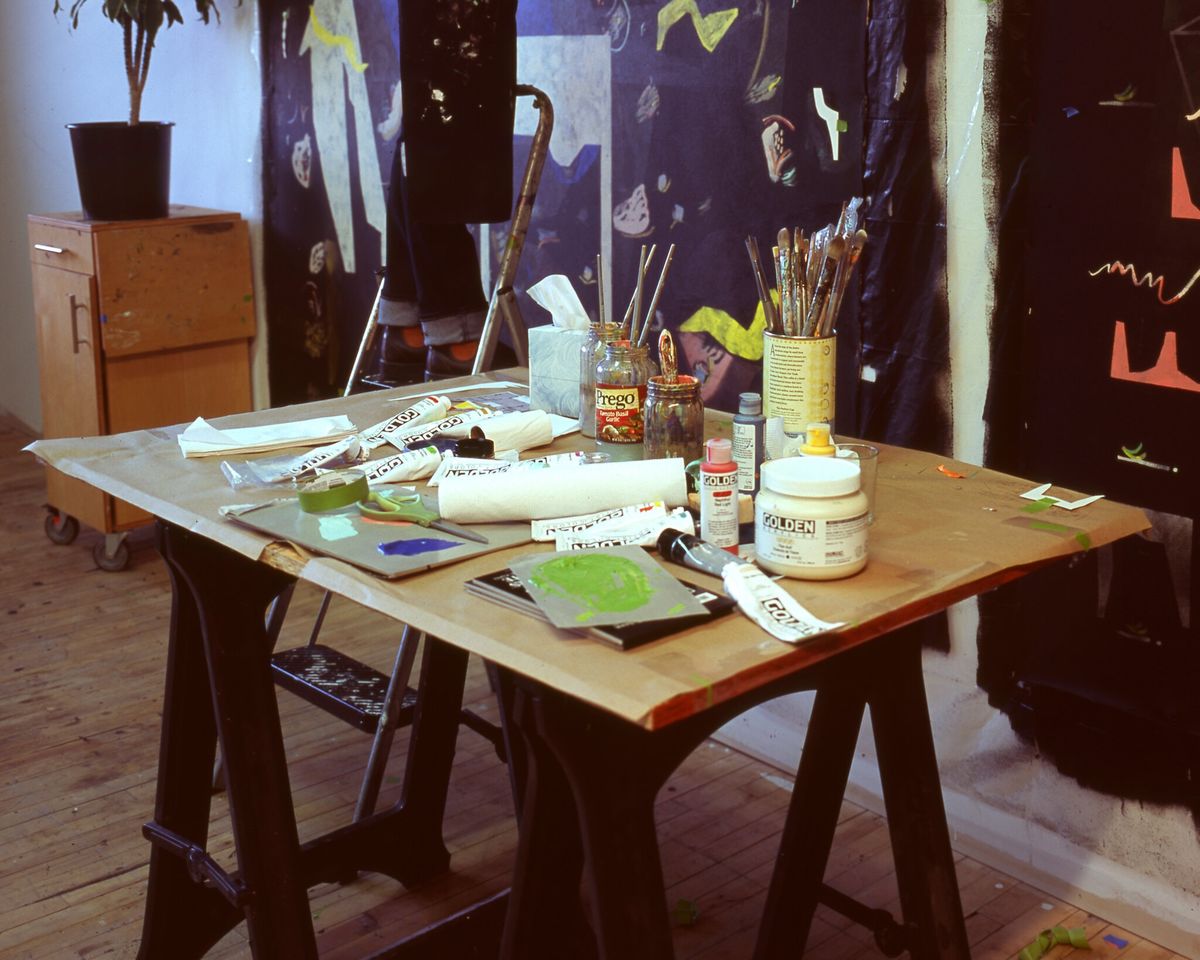
Kent begins her creative process by using cut paper to bring forth a form.
What is your day like? How much do you sleep? What’s your work schedule?
Well, I get eight hours of sleep, that’s for sure. My workday starts around 7:30 a.m. And because classes are now online, I get the little ones in front of a computer in the morning. My studio is where I live — it’s a separate room, but it’s right next door, part of the same building — so I dip into it whenever I can find pockets of time. If I’d had a studio that was outside the home during this whole pandemic, there is no way — I would be a mess.
What’s the first piece of art you ever made?
When I was a kid, I would write about myself in the third person and leave the pieces of paper around the house for my parents to find — they were supposed to be from teachers, or someone writing about their daughter. Of course, they were these aggrandized descriptions of “Caroline.” That had to be the beginning of me making objects that could be called art, because they were meant to get a response.
That sounds like childhood autofiction.
Yes, that’s exactly what it was!
What’s the worst studio you’ve ever had?
I had a one-bedroom apartment back in Minneapolis, many years ago, and I turned my living room into my studio. And that wasn’t great because I was working with charcoal and pastels, and you don’t want to breathe that stuff in. You don’t want that in your living space. So that was probably not a good idea. [Laughs] I had to end that.
What’s the first work you ever sold and for how much?
It was my first big painting from undergrad — it was a self-depiction with a bicycle that didn’t have spokes but was somehow riding along. And there was a house, and on the side of the house were two bugs. It was all metaphor. I was trying to be a surrealist. When I moved to Minneapolis, I couldn’t store it. I didn’t have space for it. So I kept it with my sister’s neighbor, and it stayed there for quite a while. One day, she told me that someone was interested in buying it, and I ended up selling it for $300. When I think about that today, I’m like, “Ah, if only I had had space.” I wish I still had that painting.
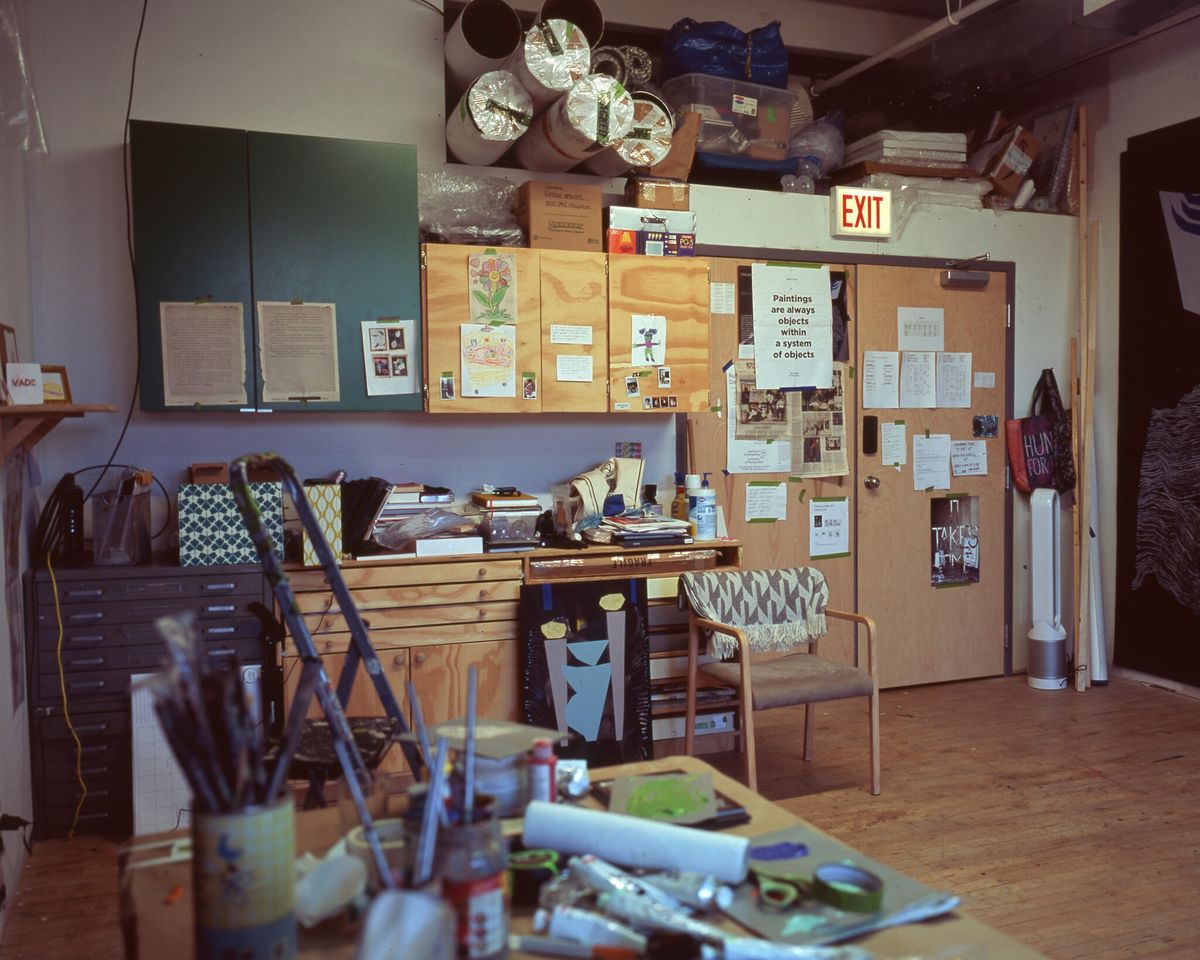
Born in rural Illinois, the artist has been living and working in Chicago since 2017.
When you start a new piece, where do you begin? What’s the first step?
I don’t use a sketch, like some artists do. I use cut paper, which for me is a quick, immediate way to bring forth a form, whether one I’m making in a composition and a painting, or even for sculpture — something I want to build. So that’s always the first thing: paper, scissors, start cutting.
How do you know when you’re done?
At this point, I would say intuition. I start getting closer to the end and, typically, I can see that I need X number of moves to finish it. When I’m nowhere near the end — when I know it’s not resolved — I have to keep making changes until I can see that end in sight.
What music do you play when you’re making art?
Oh, a lot of bad music. I don’t let too many people know what I’m listening to because it’s so cheesy — a lot of Britpop and ’90s R&B. More recently, I’ve been listening to BBC radio dramas. I don’t know how I’d missed out on this genre for so long. You’ll also notice from my practice that I like scripts, I like the performance of language. And I like theater. So this satisfies me so much. Sometimes the narrative sticks with me and sometimes I forget it because I’m working, but I just like the performance — I might be drawn into a voice or character because I get to imagine it myself.
I don’t think Britpop and ’90s R&B are cheesy, for what it’s worth — they’re great!
It’s like New Order, Jody Watley, Whitney Houston, Pet Shop Boys. Those can come right after each other. You got me to say it. [Laughs] I was listening yesterday to the Breeders. Sometimes I just have to turn on “Gigantic” by the Pixies — it’s the most fitting song for how I feel sometimes.
Kim Deal is also a twin.
That’s right! I thought of this when I was watching the video on YouTube yesterday — again, these twins.

Recently, Kent has been inspired by her Mexican heritage.
Is there a meal you eat on repeat when you’re working?
Sometimes my friend Kyle comes over and makes what I jokingly call bacon-and-egg spaghetti. It’s carbonara bucatini, but he makes it in a very specific way. I like the bucatini noodle because it’s fatter than the spaghetti noodle. It’s the most decadent meal I could ever eat, and he’s a great friend.
Are you binging any shows right now?
I don’t know if I should say this. I’m watching “The Walking Dead” for the second time. The first time I saw it was right when the pandemic started. I watched the entire thing and was fine with being done. But then I felt I needed that intensity back. The show is cheesy but so intense. What it reveals is that the zombies aren’t the thing to be scared of. It’s the people.
How often do you talk to other artists?
All the time. Living in Chicago, the majority of my friends are artists.
When you’re making your work, do you need to block out conversations with other people, or is that part of the process for you?
There are times when you’re having a lot of conversations because you’re kind of parsing ideas and the representation and critical underpinnings of those ideas. And so you don’t necessarily want to block that out in the studio, or at least I don’t want to. But there does need to be a point where I make my own decisions and my own choices, and those voices get silenced.
What do you do when you’re procrastinating?
Make big handwritten lists of what I should be doing. That’s more how I stay on track. I don’t necessarily procrastinate; I just can’t — because if I do, it’ll all fall apart.
What’s the last thing that made you cry?
The thing that makes me continue to cry is the unnecessary killing of Black people in America.
If you have windows, what do they look out on?
The L train tracks. Usually, I see the tracks and some trees moving, and then the train itself, which is very comforting. There’s a rhythmic sound to it. In the beginning, it was a new sound, but now it’s familiar. It became very empty during the pandemic — it had a ghostly feel to it.
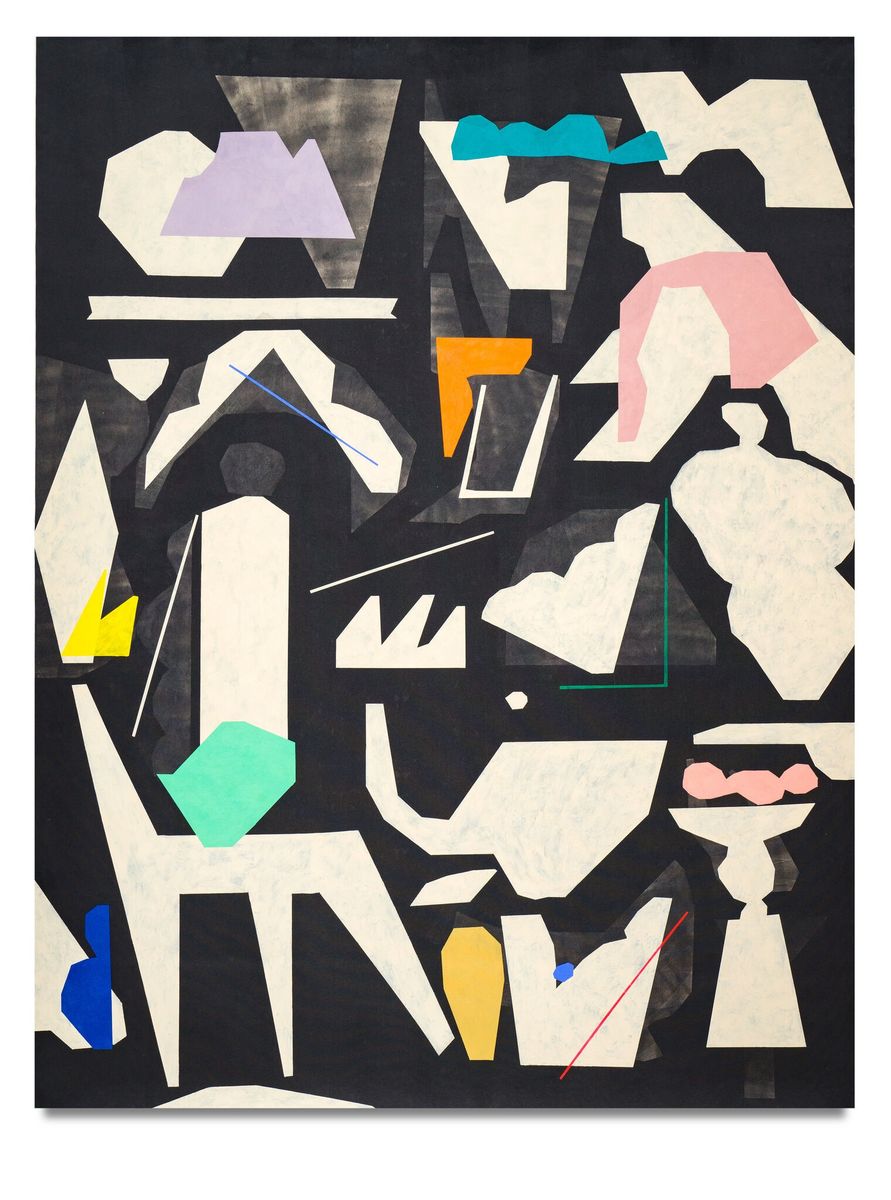
Kent’s “A Chart for Disillusionment and Chance" (2020). Courtesy of Kohn Gallery
What do you usually wear when you work?
One thing that’s constant is this black apron. I got it a long time ago from a job I had catering and I just kept it. It’s so useful because of the pockets in the front.
What do you bulk buy with most frequency?
Green painter’s tape.
What embarrasses you?
Watching a video recording of a lecture I’ve given is really hard for me. I can’t do it. But I’m always thinking, “I’m my worst critic.”
Do you exercise?
Yes. My father was an avid tennis player when I was growing up, and for a long time that was something I was meaning to pick back up. I finally did a few months ago and had an amazing coach. Now it’s full speed ahead. And I run. With winter coming and the pandemic surging again, I finally bought a treadmill and I’m going to put it in my studio. [Laughs] I think it will be a good way to clear my mind.
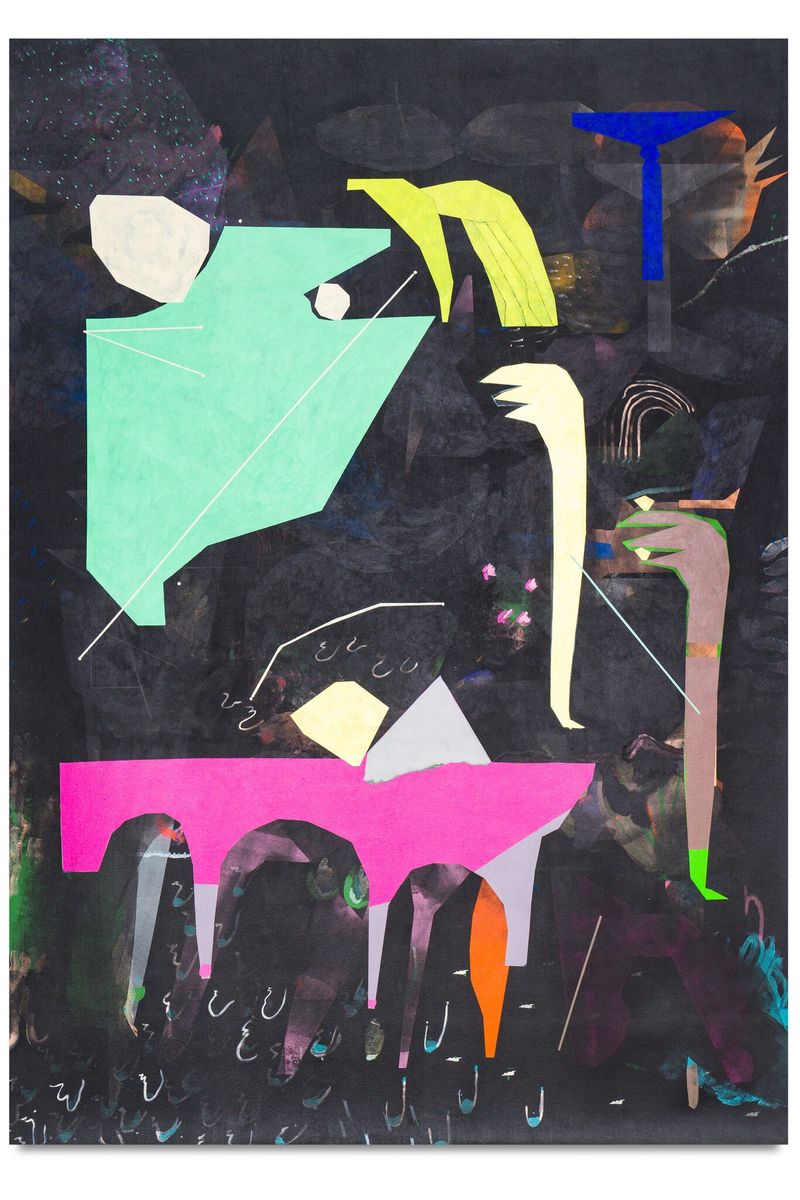
Kent’s “What the Stars Can’t Tell Us" (2020). Courtesy of Kohn Gallery
What are you reading?
I’m in a season of not reading as much. The world is so intense right now; I need that break of just watching. And, when I’ve had a little bit of time, I’ve been watching films. I just tuned in to the Chicago Jewish Community Center film festival. And Northwestern has the Block Cinema program, which is now online.
What’s your favorite artwork by someone else?
I keep going back to Ralph Lemon’s “Scaffold Room” (2014). It’s a performance piece, and I saw it at the Walker Art Center. It changed the way that I think about what happens in the space of a museum. Watching it, my feelings kept shifting from spectator to participant — because I felt like I was invited to feel inside the work. There was a lot of shifting and changing because of the intensity of the narratives, the different subjects that were coming into play. It totally rearranged my furniture.



